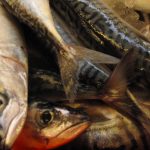Half-yearly report period 1 October 2007-31 March 2008
Intensified competition, fierce winter in Greenland and rising prices of raw materials and auxiliary materials hit Royal Greenland’s earnings in the first half-year.
Turnover for the 1st half year was DKK 2,643 m as against DKK 2,550 m for the same period last year. Sales amounted to 85,900 tons, which is unchanged.
It has thus proved possible to raise the average sale price by 3.3 % in spite of considerable competition in important markets and the falling value of the dollar and the British pound Sterling. This has partly been achieved by a changed product mix.
The EBIT result was DKK 20 m, equivalent to the same level as last year.
The failure of sales success to be reflected in earnings is primarily explained by the effects of the fierce winter in Greenland (which prevented effective use of production facilities on land and sea because of shortages of raw materials), energy price rises, price rises for packaging and auxiliary materials, and to some extent raw materials price rises.
The result before tax was a loss of DKK 62 m, as against DKK (19) m in the same period last year. The negative result development in associated companies, rising interest costs and negative currency regulations lay behind this.
The focus on tied-up capital in operations means that net working capital has fallen by DKK 191 m from the start of the half year.
DKK 121 m was used for investments in the future, mostly for completing the new factory in Koszalin (Poland). The factory was commissioned in January but is, as expected, exercising a negative influence on operations in the half-yearly accounts.
The company anticipates an EBIT result of DKK 100 m for the whole year as against DKK 98 m for the last accounting year, and a result before tax of minus DKK 24 m as against plus DKK 57n m in the previous year. Last year’s figures were positively impacted by the sale of shares in Morpol S.A., the sale of the factory in Aasiaat and positive currency regulations.
In spite of the series of negative deviations (partly of external origin), the strategic action plans are maintained, aiming to improve EBIT and reduce tied-up working capital.
The company is closely following developments with Greenlandic resources. The lower than expected allocation of cod quotas and generally declining resources are a challenge to finances in the Greenlandic activities, where much of the company’s investments are tied up. The price of Greenlandic raw materials already constitutes a threat to the competitiveness of Greenland-based industry.
The strategy undertaken will ensure that Royal Greenland continues to be well-equipped to maintain and consolidate its position as an important actor on the global seafood market.








